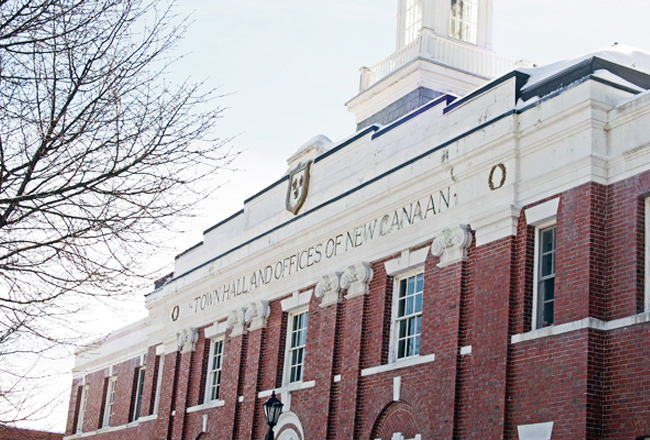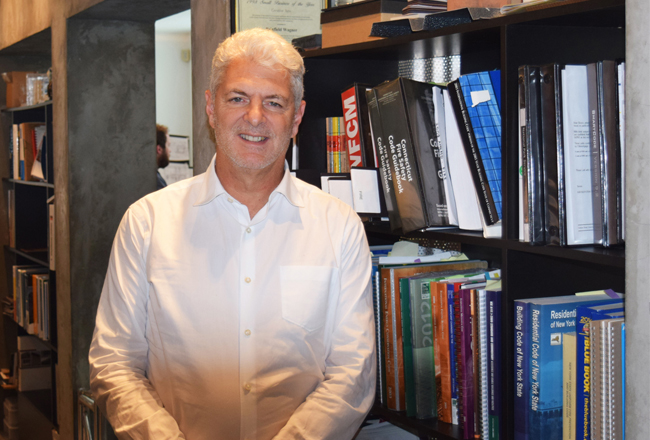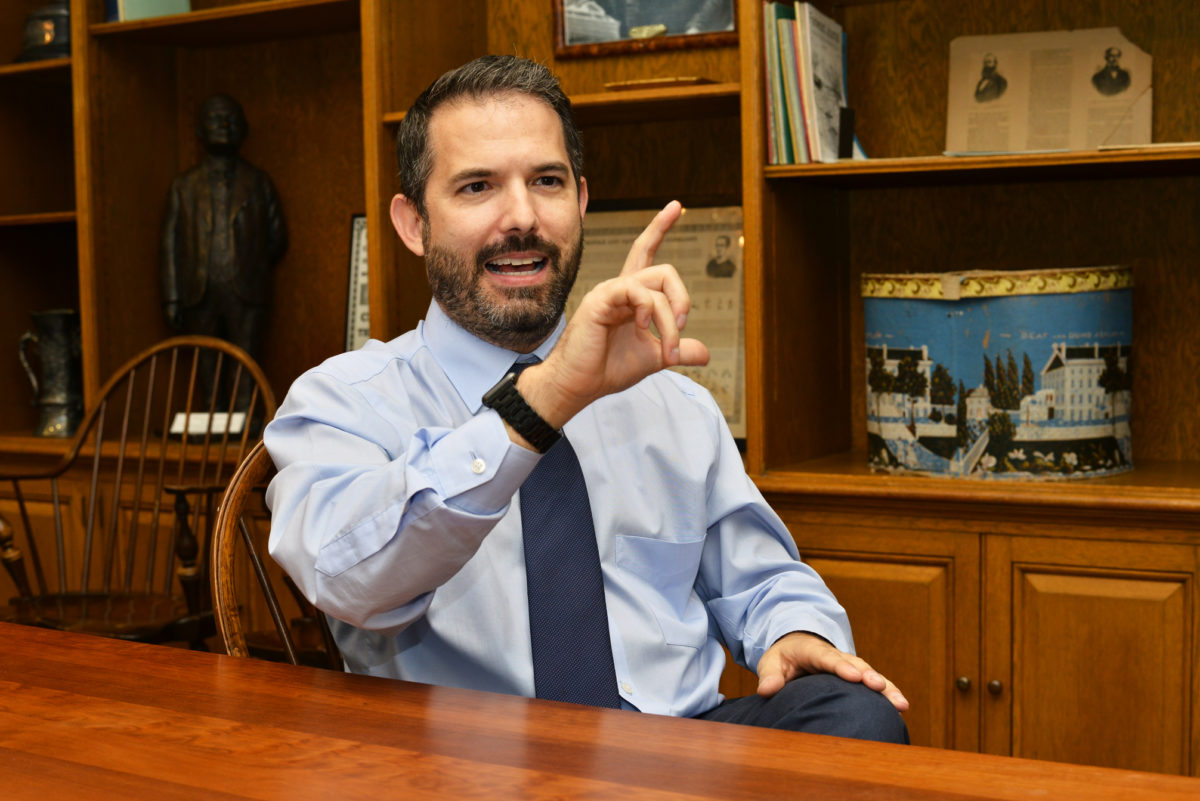
If you”™ve travelled along Interstate 287, just a few miles east of the new Governor Mario M. Cuomo Bridge, you may have noticed signs mounted on each side of the road alerting you that the New York School for the Deaf is just off of Exit 4.
Or, maybe you haven”™t.
“We have that sign, but people still don”™t know about us,” said Arlene Rice, who has worked at the school at 555 Knollwood for nearly three decades. “A lot of people don’t know who we are or where we are.”
That may be especially surprising considering the institution is marking its 79th year on the Greenburgh property and its 200th year in existence, a milestone it plans to celebrate at a gala later this month.
The lack of recognition is something the school”™s recently appointed superintendent, Bradley Porche, hopes to change.
“I want us to become a model for other schools like us around the country,” said Porche, who is deaf and spoke to the Business Journal through an interpreter.
Though Porche began his position as superintendent just three months ago, he’s already implementing his plans for the school”™s future.
“It”™s a competitive world out there,” he said. “We need to bring our students into the 21st century.”
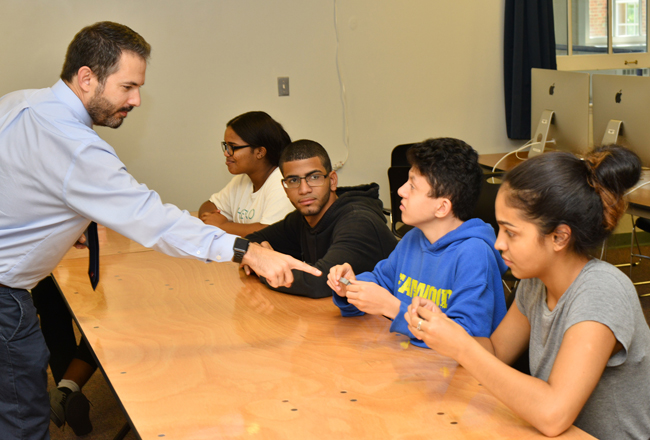
That subject is one Porche is highly familiar with, having completed his dissertation on the integration of policy making, administration and technology in the classroom. With his help, the school recently installed a trio of 3-D printers in its Center for Exploration and Explorative Learning laboratory. The laboratory is also home to a number of drones, an interactive smartboard, hands-on learning tools and even a virtual reality headset.
“The applications are endless, but the most important thing is we need to prepare our students for the real world,” he said. “If we don”™t, then they”™ll be stuck in limbo.”
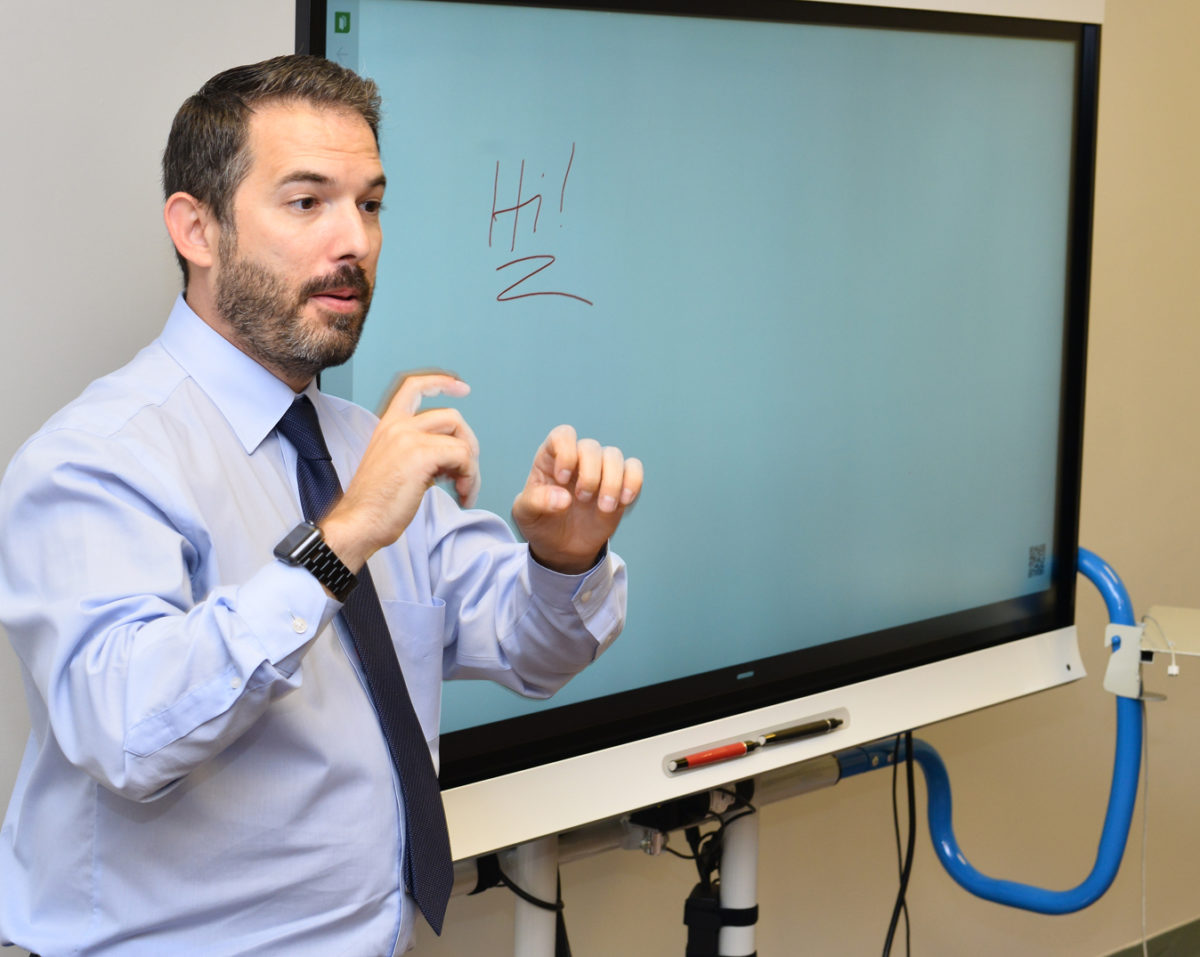
The school, which is funded by the state and private donors, facilitates a 10 month, K-12 education program, along with a preschool and early childhood program for children under 3 years old.
“For a lot of our students, sometimes they come here with no language. We provide one-on-one service during their transition to get them ready to learn in the classroom,” Porche said. “We say, the earlier you get here, the better.”
The school bills itself as bilingual, using both written English and American Sign Language in its curriculum.
“One language reinforces the other,” Porche said. “ASL is a beautiful language and students use it every day, but they also have to be prepared for the real world, too. They have to read the newspaper. They have to be able to read legal documents and understand them.”
The private, nonprofit school traces its roots to New York City in the early 1800s, when the Rev. John Stanford gathered a small group of deaf children and worked to teach them the alphabet and other basic language skills. The school received its official charter and opened its doors in downtown Manhattan in 1817, where it remained for more than a decade before relocating twice within the city: first to midtown at what is now the site of Saks Fifth Avenue and St. Patrick”™s Cathedral and later to Upper Manhattan.
In 1938, the school made its final move to a 77-acre wooded property in Westchester County.

Today, the school”™s 165 deaf or hard of hearing students travel to the campus from 23 school districts across eight counties. Students can attend the school at no cost to their families, and Rice said many travel from nearby Yonkers and the Bronx, while others have even come from other countries.
For deaf or hard of hearing students, the school is an alternative to mainstreaming, the term used to describe those students attending traditional public schools.
While proponents of mainstreaming believe students should not be excluded or taught separately from their hearing peers, others believe schools like the New York School for the Deaf offer students the most inclusive, advantageous means of education.
Porche knows the disadvantages of mainstreaming firsthand, having grown up in the traditional public-school setting. “It was very difficult in group projects” with other students. “Typically, I had to ask them to hold on, to please make sure the interpreter finished what they were saying,” he recalled.
“Imagine saying that to middle school or high school students. It became so frustrating for me to participate. I just felt like saying, ”˜Forget it.”™”
He also frequently felt as though teachers held him to a lower standard than other students. “They would say, ”˜Oh, for you? Don”™t worry about that assignment.”™ The expectations were really low. I wasn”™t on the same footing as my hearing peers.”
But for Porche, the biggest drawback mainstreaming was the lack of socialization he experienced as a child. “I always felt as though I was missing something. I didn”™t have the opportunity to go home and sit and chat or talk about girls as friends do.”

It wasn”™t until he attended Louisiana State University, and later transferred to Gallaudet University, a private school in Washington, D.C. for deaf and hard of hearing students, that he realized how many other people were like him.
“I thought I was limited to what I could do until I met them,” he said. “They were artists, engineers. One was becoming a lawyer. It opened my world.”
Those experiences are what Porche hopes to share with the students at the New York School for the Deaf.
“I think it”™s important for people to understand that we are a school that has a deaf superintendent and some deaf teachers, and that school just happens to serve deaf and hard of hearing kids,” he said.
After graduation, many students go on to attend the National Technical Institute for the Deaf, a technological college for students who are deaf or hard of hearing and one of nine colleges within the Rochester Institute of Technology. Some graduates elect to further their education at Gallaudet University. Others choose to forgo higher education altogether and immediately enter the workforce.
“It would be nice if the business community could see what our school does and be willing to welcome our students into their companies, because they will be assured that we are preparing them for that world,” Porche said.
Though deaf or hard of hearing employees may have certain needs in the business world, Porche pointed out that meeting those needs is usually fairly simple. For example, the installation of video conferencing equipment, which many companies already have, or the inclusion of interpreters can help bridge the language gap, he said.
“Other employees or business owners could make an effort themselves,” he added. “Because we”™re deaf or hard of hearing, we always need to take the time to integrate into their community. It might be nice if they would take the time and say, ”˜Why don”™t I take an ASL class? Our company has one deaf person and if I did that, it would make them feel included.”









